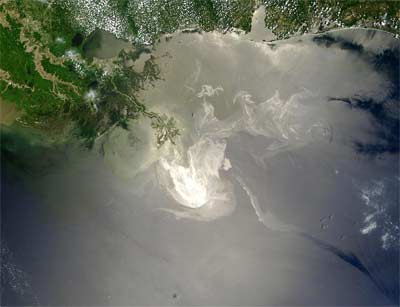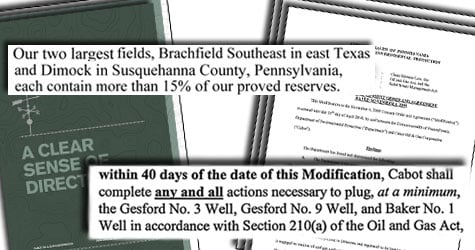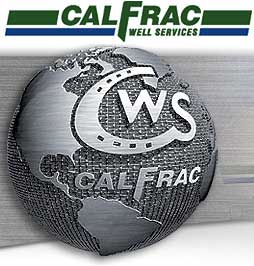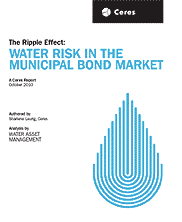Companies
Gas Drilling Companies and Businesses
WILLIAMSPORT, Pa. -- Halliburton is building a permanent outpost here on the edge of a one of the 21st century's biggest energy booms.
...Halliburton is a ubiquitous presence in the world's biggest oil fields. For the past two months, it has defended itself against charges that shoddy cement work contributed to a methane blast that sank BP's rig in the Gulf of Mexico and killed 11 people. As long as the well keeps gushing, public anger could weaken America's appetite for offshore drilling.
But far from the Gulf Coast and outside of the media spotlight, Halliburton and the oil and gas industry are spending billions of dollars in preparation for decades of drilling in the Marcellus Shale. The 95,000-square-mile sheet of natural gas-rich sediment sprawls across Pennsylvania, southern New York, West Virginia and eastern Ohio.
...Energy companies from India and Japan are dumping shareholder wealth into Appalachian gas production. In February, Japan's Mitsui & Co. entered a $1.4 billion joint venture with Anadarko Petroleum Corp.
Pittsburgh-based Atlas Energy Inc. in April formed a $1.7 billion partnership with Reliance Industries Ltd., the largest private-sector company in India. The conglomerate is controlled by Indian billionaire Mukesh Ambani, who has been pushing the company to secure lucrative energy investments outside of India.
"In the last few years, we realized we had this extremely valuable asset," says Jeff Kupfer, senior vice president of Atlas. "We needed a lot of capital to develop it." Once Atlas put out a feeler, the Marcellus prospect attracted attention from the world's major oil and gas companies. "There was something in the chemistry with Atlas and Reliance."
BJ is one of the large companies being investigated by the U.S. House Energy and Commerce Committee to see if the gas extraction method known as hydraulic fracturing, or fracking, is a hazard to groundwater drinking supplies.
The Houston Chronicle reported that Texas Democratic gubernatorial nominee Bill White, 2010, may have had a conflict of interest during his term as mayor of Houston. Bill White earned more than $2.6 million serving on the board of a gas well servicing company that now is part of a congressional investigation into possible groundwater contamination.
White, who made cleaning Houston's polluted air a hallmark of his tenure as Houston's mayor, has been on the board of BJ Services Co. since 2003, the year he was elected, earning more than $627,000.
White also received almost $830,000 in stock and another $245,000 in stock options. He will receive an additional $180,000 in stock and a retirement payout of $783,000 if the firm's merger with Baker Hughes is approved by shareholders Friday.
See: 03/31/2010--Baker Hughes and BJ Services Stockholders Approve Merger
From the web site: "BJ Services has earned a reputation for providing reliable fracturing services for virtually every major shale oil and gas operator. Since 1981, our skilled engineers and crews have successfully designed and pumped more than 21,500 shale frac treatments around the world. We know that every shale formation is different and we offer the most advanced fracturing technologies–the right fluids, proppants and equipment–needed to “crack the code” for optimum frac designs and operations."
After BP’s Texas City, Tex., refinery blew up in 2005, killing 15 workers, the company vowed to address the safety shortfalls that caused the blast.
The next year, when a badly maintained oil pipeline ruptured and spilled 200,000 gallons of crude oil over Alaska’s North Slope, the oil giant once again promised to clean up its act.
In 2007, when Tony Hayward took over as chief executive, BP settled a series of criminal charges, including some related to Texas City, and agreed to pay $370 million in fines. “Our operations failed to meet our own standards and the requirements of the law,” the company said then, pledging to improve its “risk management.”
Despite those repeated promises to reform, BP continues to lag other oil companies when it comes to safety, according to federal officials and industry analysts. Many problems still afflict its operations in Texas and Alaska, they say. Regulators are investigating a whistle-blower’s allegations of safety violations at the Atlantis, one of BP’s newest offshore drilling platforms in the Gulf of Mexico.
Now BP is in the spotlight because of the April 20 explosion of the Deepwater Horizon, which killed 11 people and continues to spew oil into the ocean. It is too early to say what caused the explosion. Other companies were also involved, including Transocean, which owned and operated the drilling rig, and Halliburton, which had worked on the well a day before the explosion.

BP, based in London, has repeatedly asserted that Transocean was solely responsible for the accident.
See: BP to pay $15 million for Texas air pollution violations. Reuters. Sept. 30, 2010.
See: Cain Burdeau. "Scientists Find Damage to Coral Near BP Well." AP. Coastal Care. Nov. 6, 2010.
In a speech in Buenos Aires last year, BP Chief Executive Tony Hayward called this "a quiet revolution...in the gas fields of North America."
New techniques like hydraulic fracturing and horizontal drilling are opening up new gas resources that could last the U.S. between 50 and 100 years, he said.
"One field where these techniques were pioneered--the Barnett Shale near Fort Worth in Texas--has almost single-handedly turned around the production of natural gas in the U.S.," Hayward said.
BP made its entry into U.S. shale gas in 2008 when it acquired 90,000 acres of the Arkoma Basin Woodford Shale play and 135,000 acres of the Fayetteville shale from Chesapeake Energy for $2.85 billion in cash.

Photo: UC Santa Barbara Geography Department. The Deepwater Horizon oil spill in the Gulf of Mexico as seen from space by NASA's Terra satellite on May 24, 2010. The spill has yet to be contained and is the worst oil spill in US history.

View of the Macondo well leaking oil in the Gulf of Mexico.
The subject of gas drilling in the Marcellus may be looked at in its historical, legal and scientific contexts. The need to heal the ineffective and mistrustful relationship between environmentalists, the U.S. government and the international energy industry concerning the preservation of American air and water becomes more urgent by seeing images like these.
See: Kara Cusolito. The Nation. "The Next Drilling Disaster".
On Sunday, Sept. 26, a committee of the National Academy of Engineering and National Research Council that is conducting an analysis of the causes of the Deepwater Horizon explosion and oil spill held a public meeting to hear from Mark Bly, group head of safety and operations for BP, and other company representatives about BP's recently released accident investigation report. Also on the agenda were executives from Halliburton and Shell Oil.
- Photos
- Webcast Audio Part 1 (Opening Remarks, BP Presentation)
- Webcast Audio Part 2 (Q&A with Committee and BP)
- Webcast Audio Part 3 (Halliburton Presentation and Q&A)
- Webcast Audio Part 4 (Shell Presentation and Q&A)
- Meeting Agenda
- Project Information
See: "More Questions About BP’s Limited Investigation Into Gulf Disaster".
See: Dave Cohen. Energy Bulletin. "Shale Gas Shenanigans."
See: National Commission on the BP Deepwater Horizon Oil Spill and Offshore Drilling
See: The Questions BP Didn’t Answer
See: Tracking the Oil Spill in the Gulf | Interactive Map
For more on the estimates, see these articles:
May 14: Size of Oil Spill Underestimated, Scientists Say
May 28: Estimates Suggest Spill Is Biggest in U.S. History
June 7: Rate of Oil Leak, Still Not Clear, Puts Doubt on BP
June 10: New Estimates Double Rate of Oil Leak
June 15: Panel Sharply Raises Estimate of Oil Spill
Aug. 2: Gulf Spill Is the Largest of Its Kind
See: Cain Burdeau. "Scientists Find Damage to Coral Near BP Well." AP. Coastal Care. Nov. 6, 2010.
See: Peter Hart. July 2010. "Still Drill, Baby—Despite Spill
Little rethinking of oil after Deepwater disaster." FAIR. (Fairness and Accuracy in Reporting)
See New Book:
Institute of Medicine, Margaret A. Mccoy, and Judith A. Salerno. Assessing the Effects of the Gulf of Mexico Oil Spill on Human Health: A Summary of the June 2010 Workshop. National Academies Press, 2010.
Cabot Oil & Gas Corporation, headquartered in Houston, Texas, is a leading independent North American natural gas producer. The company’s reserves are focused in both conventional and unconventional basins in Appalachia, the Rocky Mountains, the Mid-Continent and the Gulf Coast.
See: Cabot Oil & Gas’s Marcellus Drilling to Slow After PA Environment Officials Order Wells Closed. Lustgarten, Abrahm. ProPublica. (2010).
See: Commonwealth of Pennsylvania DEP takes aggressive enforcement action against Cabot Oil
See: Associated Press. December 16, 2010. The Wilkes-Barre Times Leader. "Gas driller to pay $4.1 million in settlement."
HARRISBURG — The state Department of Environmental Protection has abandoned its plan to force a Houston-based drilling company to pay nearly $12 million to extend a public water line to residents whose wells have been contaminated with methane gas, citing a lack of political support.
Environmental regulators say Cabot Oil & Gas Corp. instead will pay residents of Dimock a total of $4.1 million under a settlement with the company announced late Wednesday. Cabot also has agreed to pay to install whole-house gas mitigation systems in each of the 19 affected homes.
The settlement infuriated residents, who say the DEP caved to political pressure.
See also:
- Legere. Hazards posed by natural gas drilling are not limited to below ground
- Legere. Cabot and DEP clash over Dimock water contamination
- Lippert. Shale Gas Costing 2/3 Less Than OPEC Oil Incites Water Concern
- Lustgarten. Frack Fluid Spill in Dimock Contaminates Stream, Killing Fish.
- Lustgarten. Pennsylvania Orders Cabot Oil and Gas to Stop Fracturing in Troubled County
- McFerrin. Fight Over Gas Wells in Chief Logan Heads to Supreme Court
- Noell. Natural Gas Drilling Threatens Communities in Northeastern United States
- Piette. Water All Around … Or is There?
by Abrahm Lustgarten, ProPublica - April 16, 2010.
More than 15 months after natural gas drilling contaminated drinking water in Dimock, Pa., state officials are ordering the company responsible -- Houston-based Cabot Oil and Gas -- to permanently shut down some of its wells, pay nearly a quarter million dollars in fines, and permanently provide drinking water to 14 affected families.
The order is among the most punitive in Pennsylvania's history and reflects officials' frustrations over a string of drilling-related accidents. The record of spills, leaks and water contamination in Pennsylvania -- several of which are tied to Cabot -- has spotlighted the environmental risks of drilling for natural gas across the country, jeopardized development of the massive Marcellus Shale resource deposit, and contributed significantly to actions by both Congress and the U.S. Environmental Protection Agency to bolster federal oversight of drilling.
"The events at Dimock have been the black eye for the industry and have also been a black eye for Pennsylvania," the state's chief environment official, John Hanger, told ProPublica. "It's been an enormous headache. If Cabot doesn't get this message, the company has got an amazing hearing problem."
CalFrac is one of the companies the U.S. House Committee on Energy and Commerce is investigating on the potential environmental impacts from hydraulic fracturing.
"Hydraulic fracturing operations are constantly improving through advances in technology, which are intended to translate into cost savings and enhanced production for Calfrac’s customers."
According their website, Ceres (pronounced “series”) is a national network of investors, environmental organizations and other public interest groups working with companies and investors to address sustainability challenges such as global climate change.
Ceres also directs the Investor Network on Climate Risk, a network of 90 investors with collective assets totaling about $10 trillion.
See: Ceres. August 5, 2010. "Investors Managing $2.5 Trillion Press Energy Companies to Better Disclose Spill Prevention and Response Plans for Deepwater Wells Worldwide".
"It is important for all companies involved in subsea deepwater drilling to be open and transparent with investors and stakeholders at this crucial historic moment," wrote the investors.
A report published on 3BL Media, Dec. 14, 2010, stated that the request was made in a letter last week from the Investor Network on Climate Risk (INCR), a network of 98 investors with collective assets totaling over $9 trillion. It was sent to the National Commission on the BP Deepwater Horizon Oil Spill and Offshore Drilling, whose final report and recommendations are expected in January. It was signed by Mindy S. Lubber President, Ceres Director, Investor Network on Climate Risk.
See: The Investor Environmental Health Network. 2010. Overview: Hydraulic Fracturing for Natural Gas Development.
See: Before the Big Spill | Mixplex
See: National Commission on the BP Deepwater Horizon Oil Spill and Offshore Drilling | Mixplex
See: Sharlene Leurig, Water Asset Management, Ceres Report. October 2010. "The Ripple Effect: Water Risk in the Municipal Bond Market". Investor Network on Climate Risk. (PDF Download 6.6MB).
This report shows that few participants in the bond market—including investors, bond rating agencies and the utilities themselves—are accounting for growing water scarcity, legal conflicts and other threats in their analyses.
See: Futurism Now
See: H2Oil: An Explanation of the Tar Sands in Alberta
See: Keystone XL Pipeline - Issues
See: As You Sow - Corporate Accountability, Shareholder Action, and ToxicsReduction
Home page of "one of the largest producers of natural gas in the nation and the most active driller of new wells in the U.S."
Follow links on lower right side to See: Dave Spigelmeyer, Vice-President Government Relations, Chesapeake Energy.
"Open Letter to the State of New York", (February 18, 2010) advertisement publshed in Elmira Star-Gazette.
Read between the lines at The Fighting 29th, a New York State blog, home to former Congressman Eric Massa who resigned in March 2010.
See also: Chesapeake Energy: Fact Sheets On Horizontal Drilling, Hydraulic Fracturing and Water Usage. Chesapeake Energy's Media Resources Page includes: Chesapeake (Chesapeake). 2009a. Hydraulic Fracturing Fact Sheet, May 2009. Submitted to U.S. House of Representative Committee on Natural Resources.

















